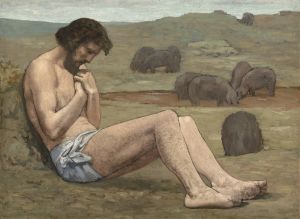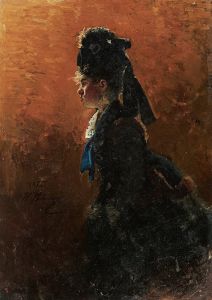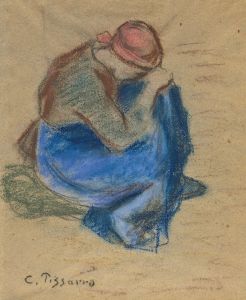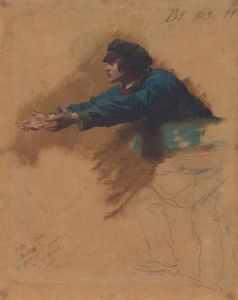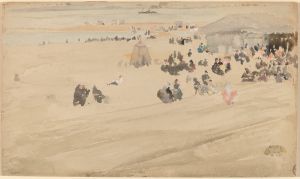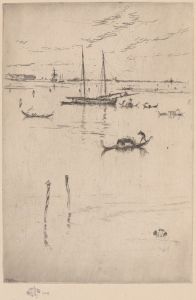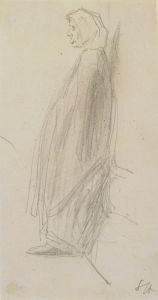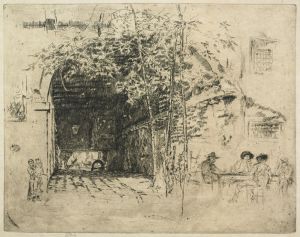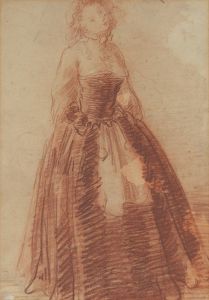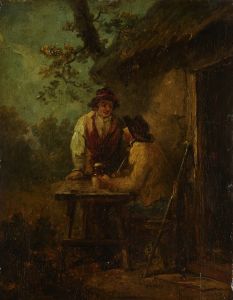
Rag Pickers, Quartier Mouffetard, Paris
A hand-painted replica of James Abbott McNeill Whistler’s masterpiece Rag Pickers, Quartier Mouffetard, Paris, meticulously crafted by professional artists to capture the true essence of the original. Each piece is created with museum-quality canvas and rare mineral pigments, carefully painted by experienced artists with delicate brushstrokes and rich, layered colors to perfectly recreate the texture of the original artwork. Unlike machine-printed reproductions, this hand-painted version brings the painting to life, infused with the artist’s emotions and skill in every stroke. Whether for personal collection or home decoration, it instantly elevates the artistic atmosphere of any space.
"Rag Pickers, Quartier Mouffetard, Paris" is a painting by the American artist James Abbott McNeill Whistler. Whistler, born on July 10, 1834, in Lowell, Massachusetts, was a prominent figure in the art world during the late 19th century. He is best known for his distinctive style and his contributions to the Aesthetic Movement, which emphasized the importance of beauty and visual pleasure in art.
The painting "Rag Pickers, Quartier Mouffetard, Paris" was created during Whistler's time in Paris. Whistler moved to Paris in 1855 to study art, and he became deeply influenced by the city's vibrant artistic community. Quartier Mouffetard, located in the 5th arrondissement of Paris, is one of the oldest neighborhoods in the city, known for its narrow streets, bustling markets, and a strong sense of local culture. During the 19th century, it was a working-class area, and rag pickers, or "chiffonniers," were a common sight. These individuals made a living by collecting and selling discarded items, often working in harsh conditions.
In "Rag Pickers, Quartier Mouffetard, Paris," Whistler captures a scene from this neighborhood, depicting the daily life of the rag pickers. The painting is characterized by Whistler's keen observation and his ability to convey the atmosphere of the place. His use of color and light creates a sense of realism and immediacy, drawing the viewer into the scene.
Whistler's technique in this painting reflects his broader artistic approach. He was known for his "nocturnes," which were paintings that depicted scenes at night or in low light, often with a focus on mood and atmosphere rather than detailed representation. While "Rag Pickers, Quartier Mouffetard, Paris" is not a nocturne, it shares Whistler's interest in capturing the essence of a moment and place.
The painting also demonstrates Whistler's skill in composition. He often employed a harmonious arrangement of elements within his works, guided by his belief in "art for art's sake." This philosophy held that the value of art lies in its beauty and form, rather than in its narrative content or moral message.
Whistler's time in Paris was crucial to his development as an artist. He interacted with other influential artists and was exposed to various artistic movements, including Realism and Impressionism. These experiences helped shape his unique style, which combined elements of both European and American art traditions.
"Rag Pickers, Quartier Mouffetard, Paris" is an example of Whistler's ability to blend these influences into a cohesive and compelling work. The painting not only provides a glimpse into the life of 19th-century Paris but also showcases Whistler's mastery of technique and his dedication to capturing the beauty of everyday scenes.
James Abbott McNeill Whistler continued to create art throughout his life, leaving a lasting impact on the art world. He passed away on July 17, 1903, in London, but his works, including "Rag Pickers, Quartier Mouffetard, Paris," continue to be celebrated for their artistic merit and historical significance.






